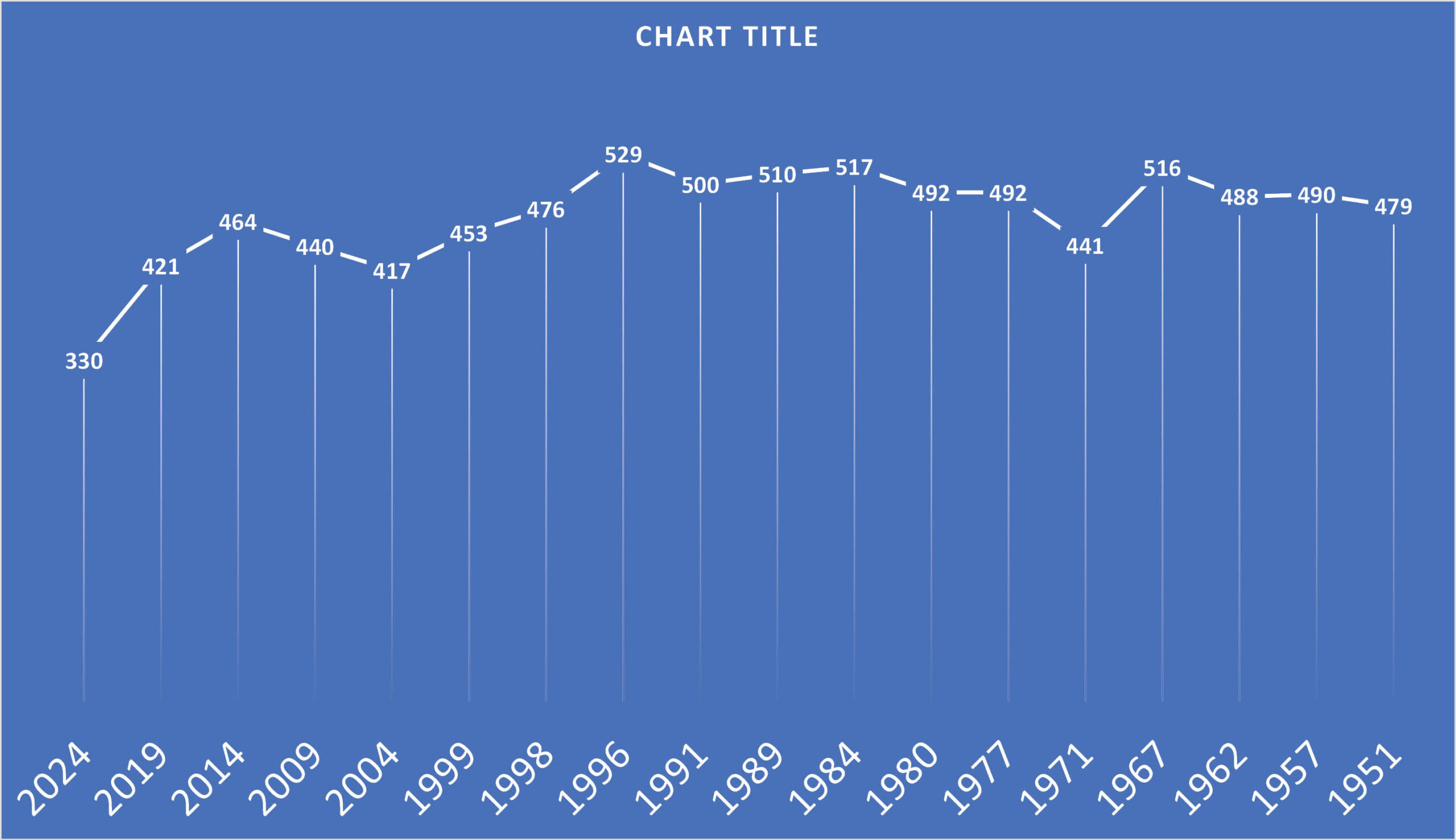


For decades, the Indian National Congress (INC) was a towering force in the nation’s political landscape, commanding formidable majorities and shaping the country’s destiny. However, a closer examination of its electoral performance in recent decades paints a disquieting picture.
A Crumbling Fort
The numbers speak for themselves. In the 2014 general election, the Indian Nationa Congress (INC) secured a paltry 44 seats out of the 464 it contested, a far cry from its commanding victory of 206 seats out of 440 just five years earlier in 2009. This downward spiral continued in 2019, with the party winning a mere 52 out of the 422 seats it vied for.
Regional Crutches Become Necessary
As the party’s nationwide appeal has waned, the INC has found itself increasingly dependent on regional parties to cobble together governing alliances. The 2004 general election serves as a stark illustration of this reality. Despite contesting 417 seats, the INC could only muster 145 victories, necessitating the formation of the United Progressive Alliance (UPA) to assume power.
Glory Days Long Gone
To truly grasp the magnitude of the INC’s decline, one need only look back to its glory days. In 1984, the party achieved a resounding victory, clinching an astounding 415 out of 517 contested seats – a feat that seems unimaginable in today’s fragmented political landscape.
Even during the tumultuous period of the 1970s, the INC managed to secure over 350 seats in both the 1971 and 1980 elections an 1962, and 1957, and in the first general election of 1951, they contested over 470 seats and were able to win 361, 371, and 364 seats, respectively.
Losing Touch with the Masses
Political analysts cite the INC’s failure to resonate with the evolving aspirations of India’s diverse electorate as a primary reason for its declining fortunes. A crisis of trust has seen its once-loyal voters who have traditionally supported it lose trust in it, with many opting for regional parties seen as more trustworthy alternatives. From the TMC in West Bengal to the Samajwadi Party in Uttar Pradesh, these regional forces have capitalized on the sentiments of traditional Congress voters and the perceived disconnect of the INC with the grassroots, offering their voters and supporters a more appealing alternative that addresses their specific concerns.
Once at the forefront of the nation’s independence movement, the party now struggles to articulate a clear and compelling vision that resonates across regions and demographics.
Some analysts attribute the party’s focus on promoting dynastic interests over organizational renewal and meritocracy has pushed away many supporters.
Dependence on Regional Parties
In the face of its waning nationwide influence, now the INC has increasingly turned to regional parties as a lifeline, forming alliances and coalitions in a bid to cling to power.
This strategy, however, comes with its own set of challenges, as the party must navigate the often-divergent interests and agendas of its regional partners, compromising its own vision and policies in the process. Regardless of the path it chooses, one thing is clear: the INC can no longer rely on its past successes. In today’s intense political competition, the party must either adapt to the changing winds or risk becoming irrelevant and being forgotten as a once powerful party that could not keep up with changing times.